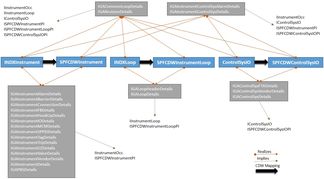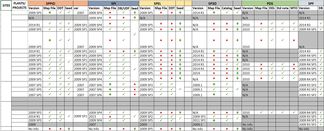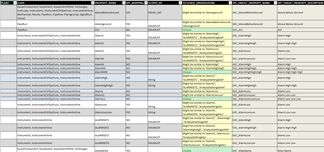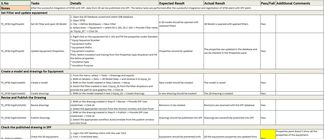SmartPlant Enterprise Schema Unification
Systems implementation and integration
Customer Benefits
Standardised company-wide engineering information management model, and enabled consolidation of project-based deliverables.
Our Services
Analysed multiple existing custom SmartPlant Enterprise tool schemas, from different versions, and designed and implemented a consolidated, unified company schema, including mappings.
The Client
Our client is a natural gas producing company based in Abu Dhabi, UAE. The company was established in 1975.
Project Challenge
Our client faced a significant challenge common to many owner/operators, who have executed multiple major projects over a long period of time. Standardising on the Hexagon PPM SmartPlant Enterprise platform, mandating initial configurations and reference data, and requiring contractors to hand over complete digital records of project deliverables ensured an excellent information resource was available.
Unfortunately, the passage of time meant that many different versions of the design applications are in use. In addition, unique, project-specific demands require that each project make unavoidable and sometimes incompatible additions to the application configuration. This resulted in a situation plant information was contained in more than 50 different source application databases, with a range of software versions spanning nearly 10 years, and many variations from the standard client reference schema.
Our client’s challenge was to streamline and consolidate access to this valuable plant information, and provide a pathway for future project execution to integrate into a common platform.
Our Solution
TecSurge proposed a solution based on our expertise with the SmartPlant Enterprise application portfolio, consisting of the following primary steps:
- Capture and compare all existing input application schema.
- Propose a unified and consolidated schema, and submit for review.
- Develop, map and test the unified schema.
- Install and execute acceptance testing on site.
Successful completion of the project reinforced the value of frequent and clear technical communication and collaboration with the client team.
Capturing Inputs
The first step involved restoring, recovering and extracting the input application schema from the various design tool databases. In some cases, an existing SmartPlant Foundation (SPF) tool map schema provided an excellent starting point, while in others application-specific inputs such as data dictionaries and DDL files were processed.
Challenges addressed during this stage included working with very old application software, and in some cases working around defects in the data quality.
The TecSurge approach was to capture all such input data in a project database, to support the analysis and mapping activities to follow.
Design Unified Schema
Once inputs were captured, the key activity of proposing and designing a unified schema was performed. TecSurge utilised the project database to compare project schema data with the relevant default application schema (to identify project-specific changes) and across different project schemas.
The results of this comparison were reviewed by the TecSurge expert team to infer the project intent, and to propose an approach for unifying the results. This included not only identifying where a custom attribute in one project was like one from another, but also consolidating data types such as enumerated lists, to give a common unified schema.
This analysis resulted in a proposed schema design, submitted to the various plant engineering teams for review and feedback, before the implementation and testing could be completed.
Implementation and Testing
Once the proposed unified schema was reviewed, and client feedback incorporated, the TecSurge team applied SmartPlant Foundation schema design and modelling expertise to implement and test the unified schema.
The implementation covered all schema elements such as classes, interfaces, properties and enumerations, as well as the plant breakdown structure (PBS) and tool mapping schemas.
TecSurge performed mapping and testing of publishing functionality from a full range of application sources, to verify that the unified schema could support the variety of inputs required, and documented the test case results for client review.
Installation and Delivery
The final stage of the project involved the TecSurge team working on-site in collaboration with the client, to install and execute acceptance testing of the technical deliverables. Frequent and clear technical communication throughout the project ensured that there were no surprises, and that project delivery and acceptance could be completed smoothly.
Upon completion of the project, our client is well prepared for the future, secure in the knowledge that their unified schema is tested and validated for existing plant information, and able to be expanded to cover future projects in a consistent manner.
Facts and Figures
- Scope: implement unified schema covering 50+ input databases from multiple applications and versions
- Expertise: SmartPlant Foundation with input from SmartPlant design tool specialists
- Duration: 3 months
- Target: SmartPlant Enterprise for Owner/Operators (SPO) 2016
If you are interested in increasing your return on investment in SmartPlant Foundation via schema unification, please contact us today to discuss your options.



